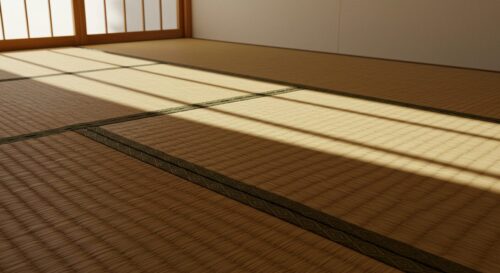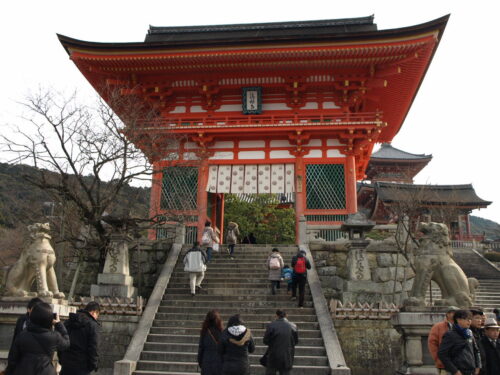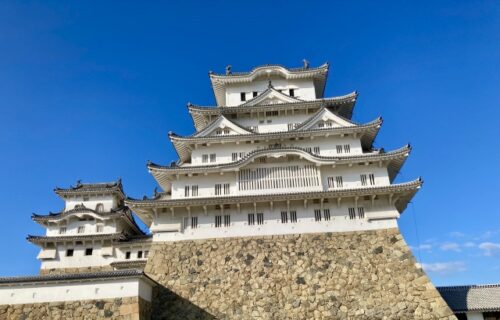The Story of Osaka Castle: How Toyotomi Hideyoshi Shaped Japan’s Greatest Castles
2025年10月21日
Delve into the compelling history of Osaka Castle, a quintessential example of Japanese castles, and understand its deep connection to the legendary unifier, Toyotomi Hideyoshi. This article will reveal how Hideyoshi’s unparalleled vision transformed a strategic location into an impregnable fortress and a dazzling symbol of his authority and the newly unified Japan. You will gain a comprehensive understanding of Osaka Castle’s architectural grandeur, its strategic importance during the tumultuous Warring States period, and its enduring legacy through the Tokugawa era to the present day. Ultimately, you will conclude that Osaka Castle, born from Hideyoshi’s ambition, is not just a historical site but a living narrative of power, resilience, and the rich cultural heritage of Japan.
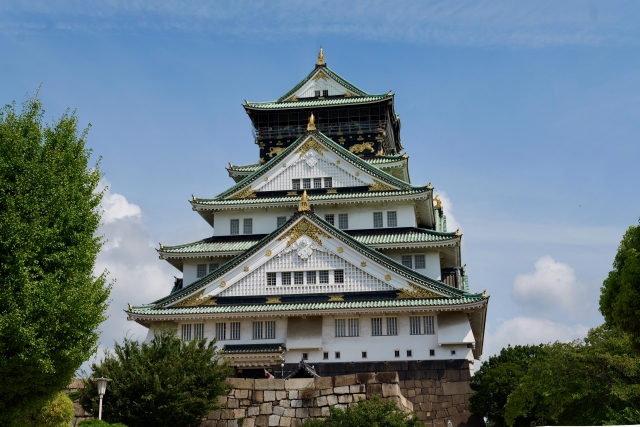
目次
Introduction to Japanese Castles and Osaka Castle
The Enduring Significance of Japanese Castles
Japanese castles, known as shiro, are iconic fortresses primarily constructed from a combination of wood and stone, evolving from simpler wooden stockades over centuries to reach their most recognizable forms by the 16th century. These magnificent structures were far more than mere military fortifications; they served as multifaceted centers of power, governance, and culture throughout Japan’s feudal history.
Their prominence surged during the turbulent Sengoku period (Warring States period, 1467–1603), an era marked by incessant civil war where powerful warlords, known as daimyo, vied for control. Castles were strategically built to defend territories, protect populations, and project the authority of their builders. They were often situated on natural elevations like hills or artificial mounds, integrating the landscape into their defensive designs.
Key architectural components contributed to their formidable defensive capabilities and distinctive aesthetic. These included massive stone walls (ishigaki), intricate gate systems (mon), defensive towers (yagura), and often extensive moats, which could be either water-filled or dry, to deter invaders. At the heart of many castles stood the main keep, or tenshukaku, a multi-storied structure that served as the ultimate stronghold and a symbol of the lord’s power.
The evolution of Japanese castles mirrors the country’s historical trajectory, from early wooden enclosures in the Heian period to more militaristic mountain castles in the Muromachi period, and then elaborate stone-based fortresses in the Azuchi-Momoyama period. Today, while many original structures were lost to wars, fires, or government policies, numerous castles have been meticulously reconstructed or preserved. They now stand as invaluable cultural heritage sites and popular tourist destinations, offering visitors profound insights into feudal Japan, samurai culture, and the nation’s rich architectural ingenuity.
Osaka Castle A Symbol of Power and History
Among Japan’s most renowned and historically significant fortresses, Osaka Castle (Ōsaka-jō) stands as an enduring symbol of power, resilience, and the dramatic events that shaped the nation. Its story is inextricably linked with one of Japan’s most influential historical figures, Toyotomi Hideyoshi, who initiated its construction in 1583.
Hideyoshi envisioned Osaka Castle not merely as a military stronghold but as a grand statement of his authority and a central base from which to unify Japan after the tumultuous Sengoku period. Its strategic location and imposing architecture were designed to awe both allies and adversaries, reflecting Hideyoshi’s ambition to consolidate power and establish a centralized government.
The castle has witnessed a turbulent past, undergoing multiple destructions and subsequent reconstructions. Notably, it suffered extensive damage during the Siege of Osaka in the early 17th century, a pivotal conflict between the Toyotomi and Tokugawa clans that dramatically shifted Japan’s political landscape. Despite these challenges, including fires and natural disasters, the castle has been diligently rebuilt over centuries, symbolizing the enduring spirit and cultural commitment of the Japanese people. The current main tower, a concrete reconstruction, was completed in 1931.
Today, Osaka Castle is a vibrant landmark and a major tourist attraction, drawing millions of visitors annually. It houses a comprehensive museum detailing its rich history, the life of Toyotomi Hideyoshi, and the feudal era. The castle is surrounded by a vast park, Osaka Castle Park, which offers a green oasis in the heart of the city, popular for picnics, jogging, and particularly famous for its spectacular cherry blossom viewing during spring.
Key Aspects of Japanese Castles
| Aspect | Description | Significance |
|---|---|---|
| Tenshukaku (Main Keep) | The central, often multi-storied tower of the castle. | Symbolic building, final stronghold for defense, lord’s residence, overview of surroundings. |
| Ishigaki (Stone Walls) | Massive walls supporting the castle’s base, built with large, fitted stones. | Primary defense against attacks, known for solid and beautiful construction, earthquake resistance. |
| Hori (Moat) | Water-filled or dry ditches surrounding the castle grounds. | Prevents enemy approach, enhances defense, slows down advancing forces. |
| Mon (Gate) | Complex entrance structures, often with multiple layers of defense. | Controlled access, strategic defense elements, used as traps. |
| Kuruwa (Bailey/Courtyard) | System of enclosed spaces and courtyards within the castle. | Organized defensive rings (honmaru, ninomaru, sannomaru), creates complex navigation for enemies. |
Toyotomi Hideyoshi’s Vision The Birth of Osaka Castle
From Humble Origins to Unifier of Japan
The saga of Osaka Castle is inextricably linked with its visionary builder, Toyotomi Hideyoshi, a figure whose remarkable ascent from obscurity to the pinnacle of power shaped the course of Japanese history. Born in 1537 into a humble peasant family, Hideyoshi’s early life was marked by poverty, a stark contrast to the noble origins of many of his contemporaries.
His journey to becoming one of Japan’s most influential warlords began when he joined the army of the formidable Oda Nobunaga as a foot soldier. Hideyoshi’s exceptional military prowess, strategic acumen, quick wit, and diplomatic skills quickly caught Nobunaga’s attention, leading to his rapid promotion through the ranks.
Following Nobunaga’s assassination in the Honnō-ji Incident of 1582, Hideyoshi swiftly avenged his lord’s death by defeating Akechi Mitsuhide at the Battle of Yamazaki. This decisive victory solidified his position as Nobunaga’s de facto successor and marked the beginning of his own quest to unify Japan, which had been fractured by over a century of civil war during the Sengoku period.
Through a series of strategic military campaigns and shrewd diplomacy, Hideyoshi systematically brought the warring provinces under his control. He conquered Shikoku in 1585 and Kyushu in 1587, ultimately completing the unification of Japan with the Siege of Odawara in 1590. By the mid-1580s, Hideyoshi had become the de facto ruler of Japan, receiving prestigious titles such as Kampaku (Imperial Regent) in 1585 and Daijō-daijin (Chancellor of the Realm) in 1586 from the Imperial Court. It was this immense power and his vision for a stable, unified nation that fueled his ambition to construct Osaka Castle, a fortress designed to be both a formidable stronghold and an undeniable symbol of his authority and the new era he ushered in.
Grand Design and Construction of Toyotomi Hideyoshi’s Osaka Castle
Toyotomi Hideyoshi commenced the construction of Osaka Castle in 1583, choosing the strategically significant site of the former Ishiyama Hongan-ji temple, which had been destroyed by his predecessor, Oda Nobunaga. Hideyoshi’s vision for Osaka Castle was one of unparalleled grandeur, intended to surpass even Nobunaga’s impressive Azuchi Castle in every conceivable way.
The construction was a monumental undertaking, reflecting Hideyoshi’s vast resources and power. It is said to have employed approximately 30,000 men and utilized 1,000 shiploads of stone per day for the inner core alone. The main keep, or *tenshu*, was an architectural marvel, designed with five visible stories on the exterior and eight internal levels. The sheer scale of Hideyoshi’s original castle was estimated to be four to five times larger than the castle that stands today. The entire construction process spanned about 15 years, with the castle finally completed in 1597, just a year before Hideyoshi’s death.
The castle’s defenses were equally imposing, featuring massive stone walls that, in some sections, reached heights of up to 20 meters. These walls were constructed using a sophisticated technique known as “burdock piling,” which involved interlocking massive granite boulders without the use of mortar, creating an incredibly robust and impenetrable barrier. Many of these colossal stones bore the crests of the various *daimyo* (feudal lords) who were compelled to contribute to the castle’s construction, serving as a visual testament to their submission and loyalty to Hideyoshi. The castle complex was further fortified by a series of two moats—an inner and an outer—enhancing its defensive capabilities.
Hideyoshi’s choice of Osaka as the castle’s location was highly strategic, aiming to establish it as the new central capital of Japan. Its proximity to Kyoto offered convenience for communication, while its economic importance and political symbolism underscored his ambition to unify and rule the nation from this magnificent stronghold.
| Aspect | Details of Hideyoshi’s Osaka Castle |
|---|---|
| Construction Start | 1583 |
| Construction Completion | 1597 (approximately 15 years) |
| Location | Site of former Ishiyama Hongan-ji temple |
| Main Keep (Tenshu) Design | Five visible stories, eight internal levels |
| Estimated Scale | Four to five times larger than the current castle |
| Manpower | Approximately 30,000 workers |
| Stone Walls | Up to 20 meters high, constructed with “burdock piling” technique |
| Moats | Inner and outer moats |
The Lavish Interiors and Golden Tea Room of Osaka Castle
The interior and exterior of Toyotomi Hideyoshi’s Osaka Castle were designed to be as awe-inspiring as its formidable defenses, reflecting his immense wealth and desire to project an image of unparalleled power and prestige. Hideyoshi spared no expense, adorning the castle’s exterior with copious amounts of gold leaf and intricate ornaments. The main keep was lacquered in black and richly decorated with golden motifs, including large peony flowers, majestic tigers, elegant birds, and various family crests. Even the roof decorations, such as the *shachihoko-gawara* (mythical dolphin-like creatures), other roofing tiles, and rounded eave edge tiles, were finished in resplendent gold leaf.
Inside, the opulence continued. Pillars were lacquered in vibrant red or deep black, while the walls were lavishly decorated with gold leaf and adorned with exquisite paintings by the leading artists of the era. Hideyoshi frequently conducted tours of this luxurious keep, strategically showcasing its splendor to enhance his authority and impress both his allies and potential adversaries.
One of the most famous examples of Hideyoshi’s extravagant taste was his portable Golden Tea Room, known as *Ōgon no Chashitsu*. This extraordinary tea room was said to be entirely covered in gold leaf, from its walls and ceiling to its pillars and even the tea utensils used within it. Designed for portability, the Golden Tea Room could be dismantled and transported, allowing Hideyoshi to host elaborate tea ceremonies wherever he traveled. These gatherings were not merely social events but crucial political and diplomatic occasions, where the dazzling display of gold served to impress warlords, foreign envoys, and the Imperial Court, further solidifying Hideyoshi’s status and power.
The first historical mention of the Golden Tea Room dates back to January 1586, when Hideyoshi had it brought to the Kyoto Imperial Palace to host Emperor Ōgimachi. It was also famously used at the Grand Kitano Tea Ceremony in 1587 and was transported to Hizen Nagoya Castle in 1592 during Hideyoshi’s campaigns in Korea. This flamboyant aesthetic stood in stark contrast to the austere simplicity of *wabi-cha*, the tea ceremony style championed by his renowned tea master, Sen no Rikyū, highlighting Hideyoshi’s unique blend of cultural patronage and political showmanship. While the original Golden Tea Room is lost to history, reconstructions, such as those found at Osaka Castle, allow visitors to glimpse the incredible grandeur of Hideyoshi’s golden age.
Osaka Castle, a monument to Toyotomi Hideyoshi’s ambition, faced its ultimate test and subsequent transformation in the turbulent years following his death. The castle’s fate became inextricably linked with the struggle for control over Japan, culminating in the establishment of the Tokugawa Shogunate.
Osaka Castle Beyond Hideyoshi’s Reign
The Siege of Osaka and the Tokugawa Era
After Toyotomi Hideyoshi’s death in 1598, a power vacuum emerged, and Tokugawa Ieyasu, one of Hideyoshi’s most powerful generals, quickly consolidated his influence, eventually establishing the Tokugawa Shogunate after the Battle of Sekigahara in 1600. However, Hideyoshi’s young son and heir, Toyotomi Hideyori, residing in Osaka Castle, remained a potential rival and a rallying point for those opposed to Tokugawa rule.
This underlying tension erupted into a series of conflicts known as the Siege of Osaka, fought in two main stages: the Winter Campaign of 1614 and the Summer Campaign of 1615. Tokugawa Ieyasu, despite his superior numbers, initially sought to weaken the Toyotomi forces through a war of attrition during the Winter Siege. A truce was eventually negotiated, which included demands for the dismantling of some of the castle’s defenses.
However, the truce was short-lived, and the Summer Campaign commenced in 1615. This decisive offensive saw the Tokugawa army, reportedly numbering over 150,000 troops, launch a massive assault against Osaka Castle. After fierce fighting, the castle fell, leading to the tragic end of the Toyotomi lineage, as Hideyori and his mother, Yodo-dono, committed suicide amidst the burning castle. This pivotal event effectively eliminated the last major armed opposition to the Tokugawa Shogunate, ushering in over two centuries of peace and stability during the Edo period.
Following the destruction of Hideyoshi’s original fortress, Tokugawa Ieyasu ordered the reconstruction of Osaka Castle, entrusting the project to master castle architect Tōdō Takatora and Kobori Enshu. Completed around 1628, the Tokugawa-era Osaka Castle was designed to be even more formidable and serve as an undeniable symbol of the shogunate’s power. The new castle featured significantly higher and thicker stone walls and deeper moats, making it an imposing defensive position in western Japan. Interestingly, the Tokugawa reconstruction buried the base of the original Toyotomi keep, effectively building over Hideyoshi’s legacy.
Reconstruction and Modern Legacy of Osaka Castle
While the Tokugawa Shogunate successfully rebuilt Osaka Castle as a bastion of their authority, its main tower was not immune to the ravages of time and natural disasters. In 1665, the main keep was struck by lightning and subsequently burned down, remaining unreconstructed for centuries during the feudal age.
The castle suffered further damage during the Meiji Restoration in 1868, with many structures, excluding gates like the Otemon Gate and Tamon-yagura Turret, burning down in the surrounding disorder. The 20th century brought another period of destruction, as parts of the castle were damaged by aerial bombings during World War II in 1945.
The current iconic main keep of Osaka Castle is a modern reconstruction. In 1931, driven by the proposal of Osaka Mayor Hajime Seki and funded by donations from citizens, a ferro-concrete reconstruction of the castle tower was completed. This groundbreaking project made Osaka Castle the first concrete castle tower in Japan. While its exterior faithfully replicates the Edo-period design, including golden shachihoko (mythical tiger-fish) roof ornaments and crouching tigers, its interior is entirely modern, featuring an elevator for accessibility and functioning as an informative museum.
Major repair works in 1997 further enhanced the castle’s splendor, restoring it to its 1931 form. Today, Osaka Castle stands as a prominent historical landmark and a symbol of the city. The museum within the main keep offers a comprehensive journey through the castle’s tumultuous history and the life of Toyotomi Hideyoshi, displaying historical artifacts, samurai armor, and weaponry.
The castle is enveloped by the expansive Osaka Castle Park, a vast green space covering approximately 105 hectares. The park is a popular destination, particularly during the cherry blossom and plum blossom seasons, and offers various facilities including Nishinomaru Garden, Osaka Castle Hall, and sports grounds. The park also features walking paths, water features, and provides excellent vantage points for photographing the majestic castle.
The following table summarizes the key differences between the Toyotomi and Tokugawa eras of Osaka Castle:
| Feature | Toyotomi Era Osaka Castle (Late 16th Century) | Tokugawa Era Osaka Castle (Early 17th Century) |
|---|---|---|
| Primary Builder | Toyotomi Hideyoshi | Tokugawa Ieyasu (and successors like Hidetada) |
| Symbolism | Center of Toyotomi rule, symbol of Hideyoshi’s power and opulence | Symbol of Tokugawa dominance, strategic stronghold for the shogunate |
| Main Keep Design | Lavish, gold-adorned, reflecting Hideyoshi’s wealth and authority | Rebuilt, larger, and more imposing, reflecting Tokugawa authority. |
| Stone Walls & Moats | Impressive, but largely destroyed in the Siege of Osaka | Rebuilt with significantly higher and thicker stone walls and deeper moats. |
| Fate of Structure | Destroyed in the Siege of Osaka (1615) | Main tower burned down by lightning (1665), suffered further damage during Meiji Restoration and WWII. |
The enduring presence of Osaka Castle, despite its repeated destructions and reconstructions, underscores its profound significance in Japanese history. It stands as a testament to the ambitions of powerful leaders and the resilience of a nation that continually rebuilds its heritage. Visitors can explore its rich history through the Osaka Castle Museum and enjoy the surrounding Osaka Castle Park, a vibrant green space. For more detailed historical context, resources like Wikipedia’s Siege of Osaka page provide extensive information.
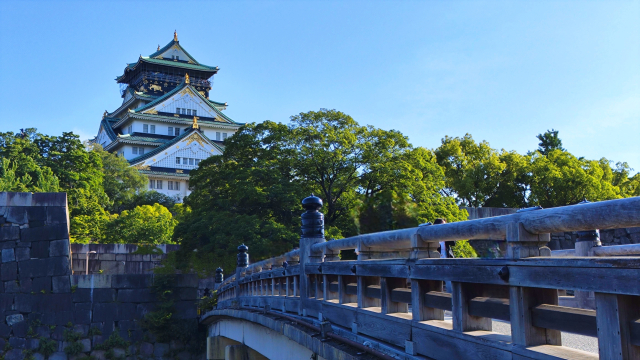
Osaka Castle Among Japan’s Greatest Fortresses
Architectural Marvels of Osaka Castle
Comparing Osaka Castle with Other Iconic Japanese Castles
| Feature | Osaka Castle | Himeji Castle | Nagoya Castle | Matsumoto Castle |
|---|---|---|---|---|
| Appearance / Nickname | Gleaming white walls, blue-green roofs, golden embellishments; “Golden Castle” (Kinjo) | Elegant white exterior; “White Heron Castle” (Shirasagi-jo) | White exterior with prominent golden *shachihoko* on roof | Striking black exterior; “Crow Castle” (Karasu-jo) |
| Construction Era / Original Builder | First built 1583 by Toyotomi Hideyoshi | Dates back to 14th century, extensively rebuilt early 17th century by Ikeda Terumasa | Built 1610-1612 by Tokugawa Ieyasu | Dates back to 16th century, present form early 17th century |
| Current Structure Status | Modern reconstruction (1931) of steel and concrete, functioning as a museum | Many original structures preserved, UNESCO World Heritage Site | Rebuilt in 1959 after WWII destruction, ongoing Honmaru Palace restoration | One of the few remaining original castles with wooden interior |
| Key Architectural Highlights | Massive stone walls (tallest in Japan), deep moats, numerous turrets, golden ornamentation | Complex defensive systems, 83 rooms, multiple keeps and gates | Golden *shachihoko*, Honmaru Palace | Picturesque moat, imposing keep, scenic location with Northern Alps backdrop |
| Visitor Experience | Modern museum with interactive exhibits, elevators, panoramic city views from main tower, popular for cherry blossoms | Traditional castle experience, historical atmosphere, exploring ancient corridors | Honmaru Palace, castle museum, garden | Authentic wooden interior, picturesque setting |
Conclusion
Osaka Castle stands as an unparalleled monument to Japan’s rich feudal history and the audacious vision of Toyotomi Hideyoshi. Conceived and constructed by Hideyoshi in the late 16th century, this formidable fortress was more than just a military stronghold; it was a potent symbol of his rise from humble beginnings to become the unifier of Japan during the tumultuous Sengoku period. Its original grandeur, characterized by colossal stone walls, expansive moats, and a main keep adorned with gold leaf, epitomized Hideyoshi’s immense power and his ambition to create the most magnificent castle in the land.
Though Osaka Castle faced destruction during the Siege of Osaka and underwent subsequent reconstructions, particularly during the Edo period under the Tokugawa Shogunate and its modern restoration, its spirit and historical significance have endured. Today, it serves as a vibrant museum and a pivotal cultural heritage site, drawing millions of visitors who seek to connect with Japan’s storied past. The castle’s architectural prowess, showcasing advanced defensive strategies and aesthetic splendor, places it firmly among Japan’s greatest fortresses, often discussed alongside iconic structures like Himeji Castle and Matsumoto Castle.
Ultimately, Osaka Castle is a testament to resilience, a beacon of architectural ingenuity, and a lasting embodiment of Toyotomi Hideyoshi’s enduring legacy. It continues to inspire and educate, reminding us of a pivotal era in Japanese history and the indelible mark left by one of its most influential figures, forever cementing its place as a cornerstone of Japan’s national heritage.
Key Aspects of Osaka Castle and Toyotomi Hideyoshi’s Legacy
| Aspect | Description |
|---|---|
| Primary Builder | Toyotomi Hideyoshi, a pivotal figure in unifying Japan during the Sengoku period. |
| Era of Original Construction | Late 16th century (circa 1583), marking the pinnacle of feudal castle design. |
| Symbolic Significance | A grand declaration of Hideyoshi’s power, wealth, and his ambition to rule Japan. |
| Architectural Highlights | Massive stone foundations (ishigaki), deep moats, and a multi-tiered main keep (tenshu) reflecting advanced Japanese fortification techniques. |
| Modern Legacy | A prominent historical landmark, a museum preserving artifacts from the Sengoku and Edo periods, and a major tourist attraction. |
For more information about our projects and craftsmanship, please visit our official website:
🌐 Sato Construction (Shizenya)
Watch our latest video on YouTube and see how we bring traditional Japanese architecture to life:
▶️ Sato Construction YouTube Video
